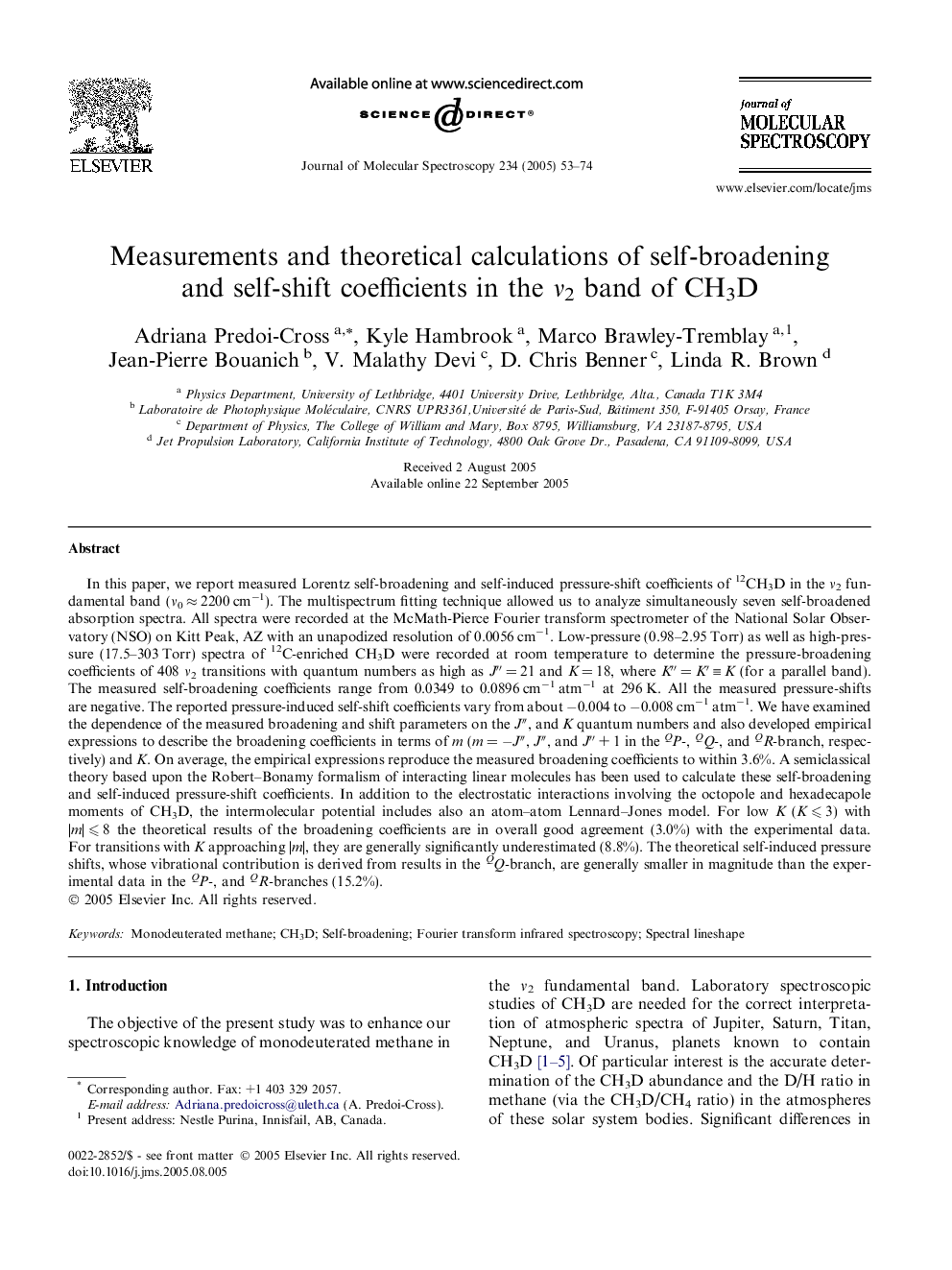| Article ID | Journal | Published Year | Pages | File Type |
|---|---|---|---|---|
| 9589473 | Journal of Molecular Spectroscopy | 2005 | 22 Pages |
Abstract
In this paper, we report measured Lorentz self-broadening and self-induced pressure-shift coefficients of 12CH3D in the ν2 fundamental band (ν0 â 2200 cmâ1). The multispectrum fitting technique allowed us to analyze simultaneously seven self-broadened absorption spectra. All spectra were recorded at the McMath-Pierce Fourier transform spectrometer of the National Solar Observatory (NSO) on Kitt Peak, AZ with an unapodized resolution of 0.0056 cmâ1. Low-pressure (0.98-2.95 Torr) as well as high-pressure (17.5-303 Torr) spectra of 12C-enriched CH3D were recorded at room temperature to determine the pressure-broadening coefficients of 408 ν2 transitions with quantum numbers as high as Jâ³Â = 21 and K = 18, where Kâ³Â = Kâ²Â â¡Â K (for a parallel band). The measured self-broadening coefficients range from 0.0349 to 0.0896 cmâ1 atmâ1 at 296 K. All the measured pressure-shifts are negative. The reported pressure-induced self-shift coefficients vary from about â0.004 to â0.008 cmâ1 atmâ1. We have examined the dependence of the measured broadening and shift parameters on the Jâ³, and K quantum numbers and also developed empirical expressions to describe the broadening coefficients in terms of m (m = âJâ³, Jâ³, and Jâ³Â + 1 in the QP-, QQ-, and QR-branch, respectively) and K. On average, the empirical expressions reproduce the measured broadening coefficients to within 3.6%. A semiclassical theory based upon the Robert-Bonamy formalism of interacting linear molecules has been used to calculate these self-broadening and self-induced pressure-shift coefficients. In addition to the electrostatic interactions involving the octopole and hexadecapole moments of CH3D, the intermolecular potential includes also an atom-atom Lennard-Jones model. For low K (K ⩽ 3) with |m| ⩽ 8 the theoretical results of the broadening coefficients are in overall good agreement (3.0%) with the experimental data. For transitions with K approaching |m|, they are generally significantly underestimated (8.8%). The theoretical self-induced pressure shifts, whose vibrational contribution is derived from results in the QQ-branch, are generally smaller in magnitude than the experimental data in the QP-, and QR-branches (15.2%).
Keywords
Related Topics
Physical Sciences and Engineering
Chemistry
Physical and Theoretical Chemistry
Authors
Adriana Predoi-Cross, Kyle Hambrook, Marco Brawley-Tremblay, Jean-Pierre Bouanich, V. Malathy Devi, D. Chris Benner, Linda R. Brown,
